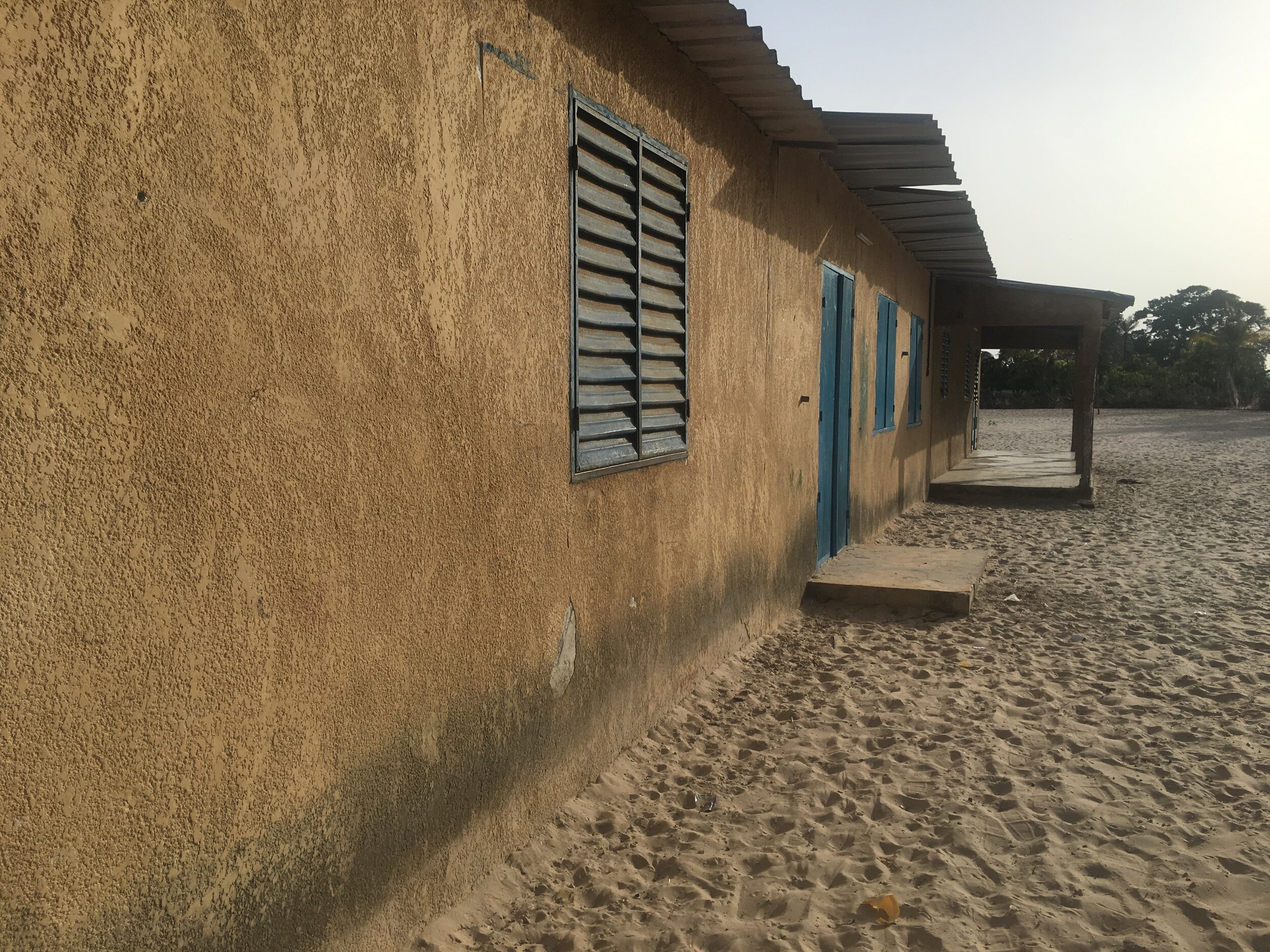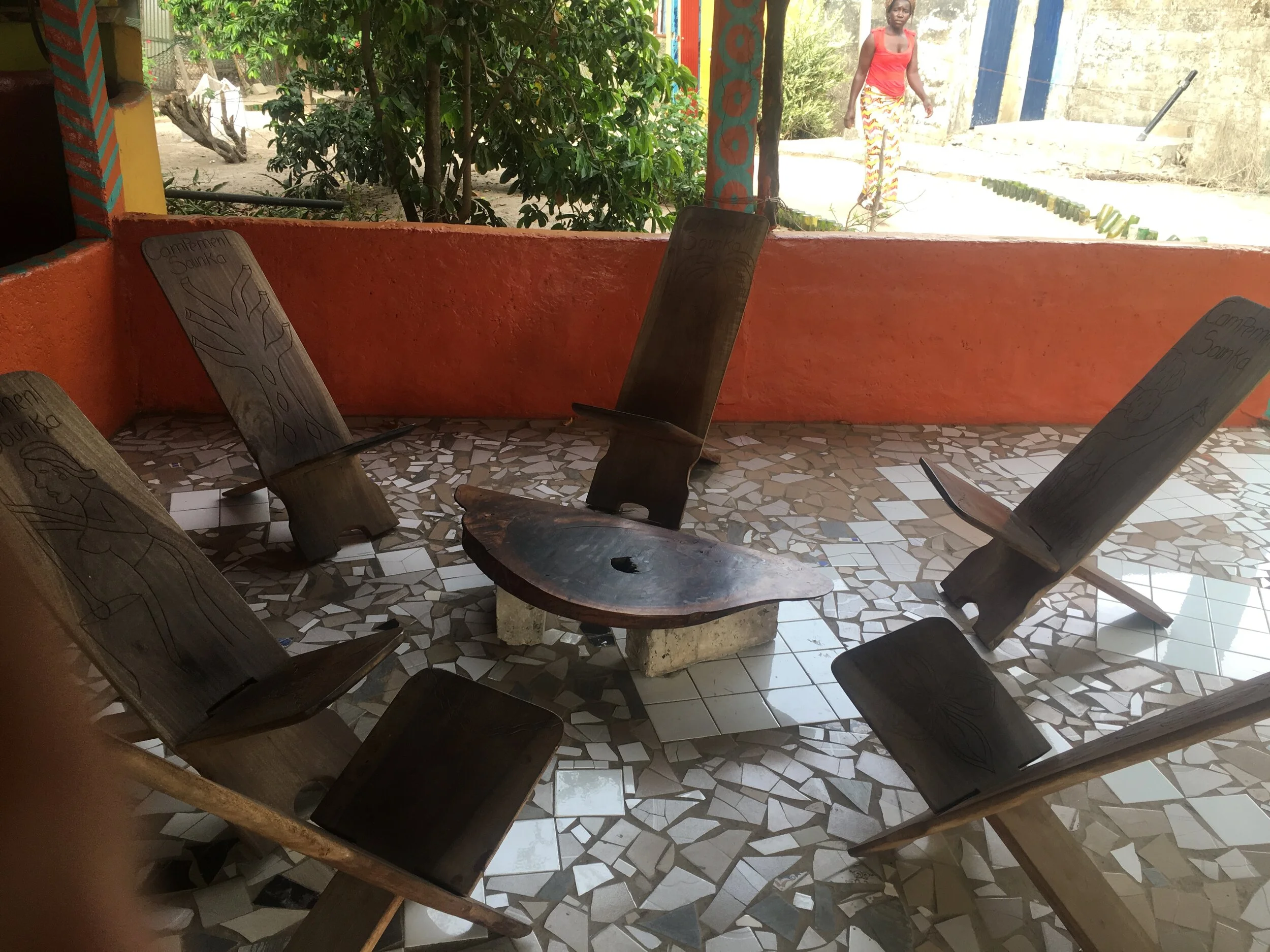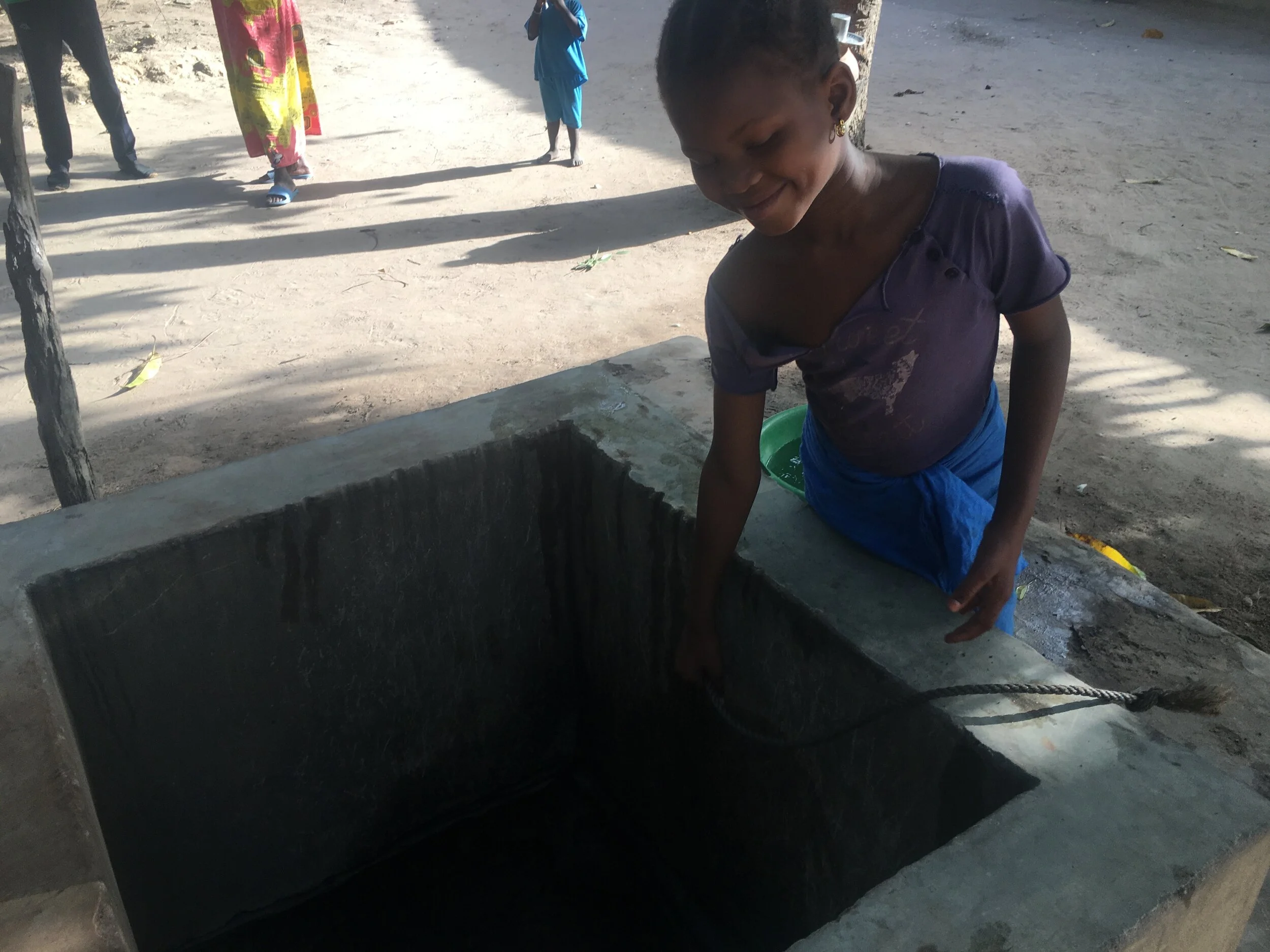Imma Cashew
Paco takes us on a walking tour of the village adjacent to Ossouye where our hotelier Pier’s family lives. Pier is wearing pink sporty capri’s and a gold speckled tee shirt when we mean him but changed into a Barcelona jersey for the trek where we passed his aunts, great aunts and neighbors on the way to the cashew farm at the edge of town.
A red cashew fruit hangs from the branch.
I’ve never given much thought to how cashews are produced but as I’m sure many nut enthusiasts have, I’ve lamented the cost of nuts. Now that I’ve witnessed first hand the amount of labor and effort that goes into their production, I actually think nuts are under valued.
Jean Sebastian (Pier’s friend’s) father created 3 factories when he retired. As we learned from the potter’s retired husband, Senegalese workers enjoy months, not years of pension support and have to take retirement jobs of be supported by their children. Jean Sebastian (who was wearing a yellow tank top and jeans) told us his father wanted to bring jobs to the villages and make something to sell. As per always he spoke in French and Megan translated for us English speakers.
Cashew trees (pronounced caj-shoo in Senegal) produce after 5-6 years of being planted. The fruit looks like a bell pepper hanging upside down with an additional green conical “stem” where an individual cashew nut resides. The fruit itself is edible raw (though a bit bitter and pithy, I didn’t like it) and the juice can be drank or turned into wine called Bon Bon. The fruit can also be processed into rum, or jam. The nuts have a more involved process to take them from the tree to edible.
Jean Sebastain takes us on a tour of his family cashew farm.
The first roasting is done over a charcoal stove on the ground.
Once the nuts are picked by hand they’re taken out of the green stem and roasted and left in the sun to dry. The outer casing is broken to free what we would recognized as a cashew nut and those are laid onto cookie sheets and baked over a wood fire. Cashew nuts have a corrosive oil surrounding them that burns the mouths if it’s not cooked and burned off. Cashews also have an inner shell like a peanut that must be pealed before packaging.
Jean Sebastian speaks slowly and deliberately. The workers are done with the day’s shift by the time we arrive at 5 p.m. but he’s clearly ready to deliver the information. He looks taken aback when Megan asks for a Facebook or website to help promote the product. No, he says, they don’t sell online, only in town and at the factory. We buy five bags at 2,000 CFA or a little less than $4 a piece. Jean Sebastian is happy with our purchase and invites us back any time. There are also star fruit and mangos on his property. He warns us to walk quickly between through the mango grove because they are ripe and could fall on us without warning.
Jean Sebastian reminds me of a Sudanese man named Ashraf we met at our first hotel in Casamance. He studied to be an English teacher and he showed me his teaching certificate, which he keeps folded up with his passport and ID card, but he never taught. Sudan is too unstable and government paychecks aren’t consistent. He came to Senegal on an exploratory mission to see how he could buy land and make his own Cashew factory.
The second roasting is done in one of two wood-fire ovens. Each tray can hold several kilos of nuts.
Senegal is a peaceful country and Ashraf wants to sell his cashews to Saudi Arabia and Qatar, where they would fetch a good price, much better than a teaching salary in Sudan.
The inner skin of the nut is peal after the second roasting before the nuts are packaged.
He invited us to visit (which the US government under no uncertain circumstances expressly warns against. Knowing the amount of labor and time involved in growing and processing cashews, I’m impressed that this young entrepreneur who didn’t speak French, is contemplating a cross continent move to such a seemingly poor country. Opportunity is always relative.
Jean Sebastian sells cashew juice and several flavors of roast nuts such as honey, pepper, lime and sugared at the stand at the factory.










